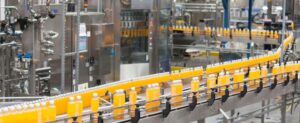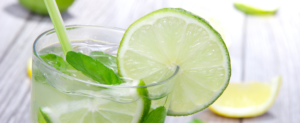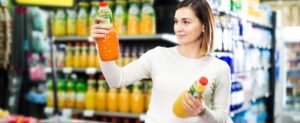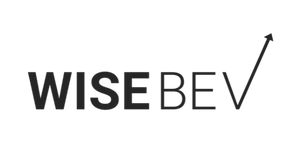It was a pleasure being a guest on Katie Mleziva’s Real Food Brands Podcast. In Episode 32, we discussed how companies can best go about developing new food and beverage products, and specifically how we approach beverage development here at WiseBev, in our very own lab.
We hope you find this episode as insightful as we did. At WisBev, we bring your beverage ideas to life. If you have a beverage idea that you are looking to develop, contact us today for a free consultation.
From the Real Food Brands Podcast:
In this episode, host Katie Mleziva sits down with Lindsay Wisener, an independent beverage development consultant working on everything from baby formula to plant-based protein drinks. She’s the Owner/Principal Consultant at WiseBev and shares with us the ins and outs of product development.
Lindsay got her BS and MS in Food Science from Purdue University, with a research specialization in dairy chemistry. That landed her at Mead Johnson Nutrition working on infant formula. From there, she worked at Kellogg until eventually setting out on her own as an independent consultant. “It’s a lot of fun, it’s every geeky food scientist’s dream to have their own place to tinker and play,” which she does in her own lab specifically designed for beverage development.
When Beginning the R&D Process Identify Your Non-Negotiables
Most small food and beverage companies can’t do a full-on R&D process the way that big brands can, but you can still apply some of the same concepts while remaining nimble. As Lindsay puts it, “don’t put handcuffs on your process, but instead create guardrails for product development.” It’s good to have some guidelines—like you want to incorporate B vitamins or make something that emphasizes protein content—while also maintaining some flexibility so you can look at a range of options.
It’s important to realize that packaging can also play a role in development constraints. “I could probably look at a bottle and tell you what type of beverage process that bottle goes with,” Lindsay says, and even make an estimate as to things like shelf-life. “You have to decide what really matters: is it the presentation? Is it the clear bottle that will be placed in the refrigerated section of the store? Or is the shelf life where you probably won’t see the product?” In short, decide what your non-negotiables are and set your priorities for the product taste and texture, health claims, packaging, store placement, etc., then work with your developer to make your decisions from there.
Finding the Right Balance for Line Extension Product Development
If you’re looking at a line extension to your existing product portfolio, there is a balance of finding a meaningful change to the retailer and consumer, but a change that does not impact your entire production more than absolutely necessary.
“If you can come up with something that goes into the same food or beverage form, where you can stay in the same manufacturing setting and not have to the change the formula drastically, you’re going to be much better off both financially and in how fast you can get to market.” Again, it’s best to know your goals so you can work backwards to do something that makes sense. You don’t want to put those handcuffs on your innovation pipeline, but you also want to be realistic about what it will take to get your product to market.
Getting Consumer Feedback
Lindsay has a lot of experience with new product testing, and her biggest advice is “not developing your new product in a vacuum.” If it’s just Lindsay and her client standing in her lab tasting things, they’re probably not hearing enough feedback from the target market. Food for kids is an obvious example, but pretty quickly shows you why it’s important to get outside feedback. Lindsay recommends shooting for 100-150 people in your ideal audience for starters.
When you’re doing research, it’s important to be organized about how you collect feedback so there’s some sort of standardization. That helps you keep track of trends, but it also gives you something concrete when you talk to buyers and investors. Now, Lindsay has run into instances where buyers conduct their own tests with a different target market, or where various flavors test more-or-less the same. There’s not always a definitive answer, but it’s better to have some idea of where you stand rather than taking a shot in the dark.
The bottom line for Lindsay is to “stay true to your Why for your brand, but be open to other ways in which you can accomplish that same thing.”







